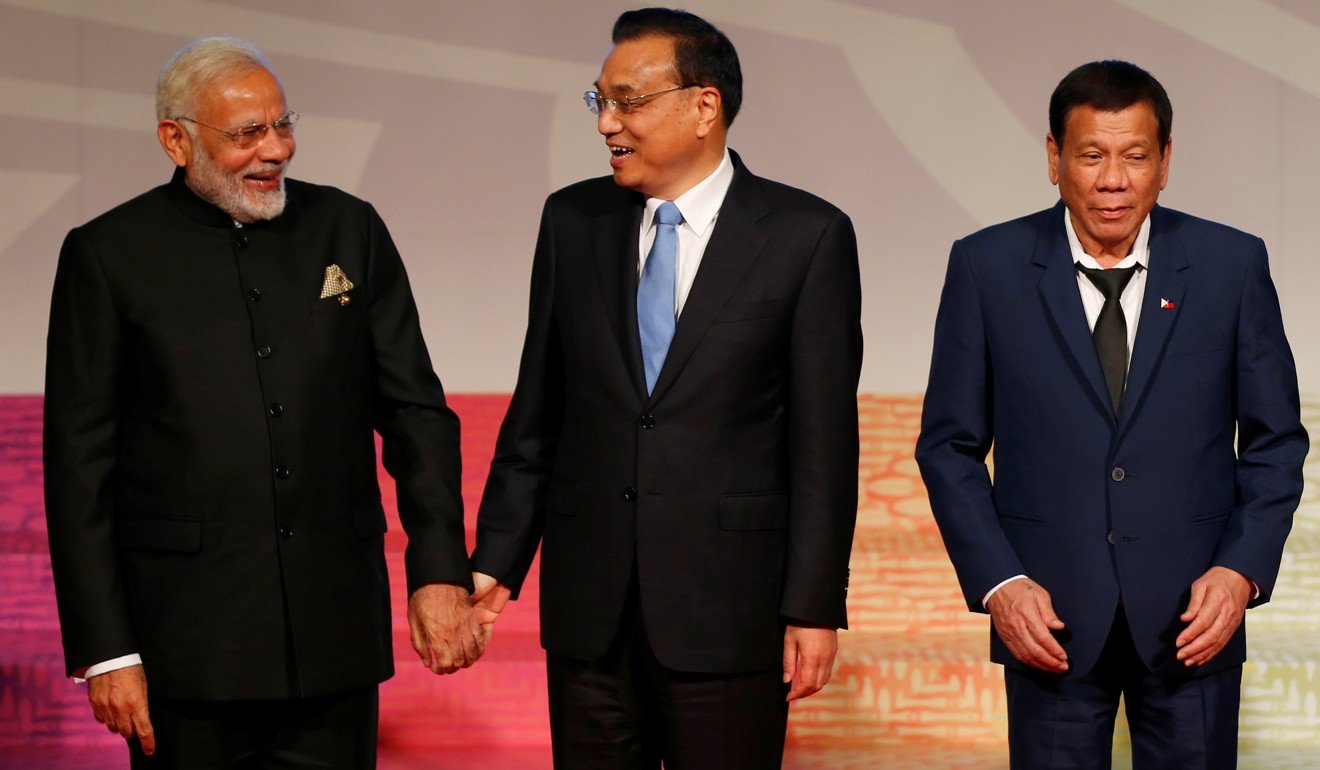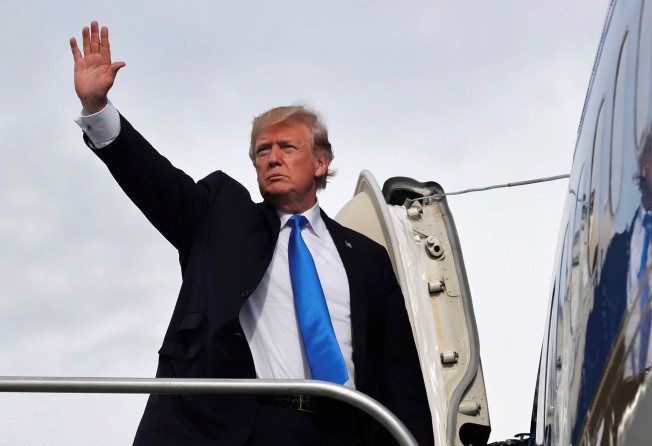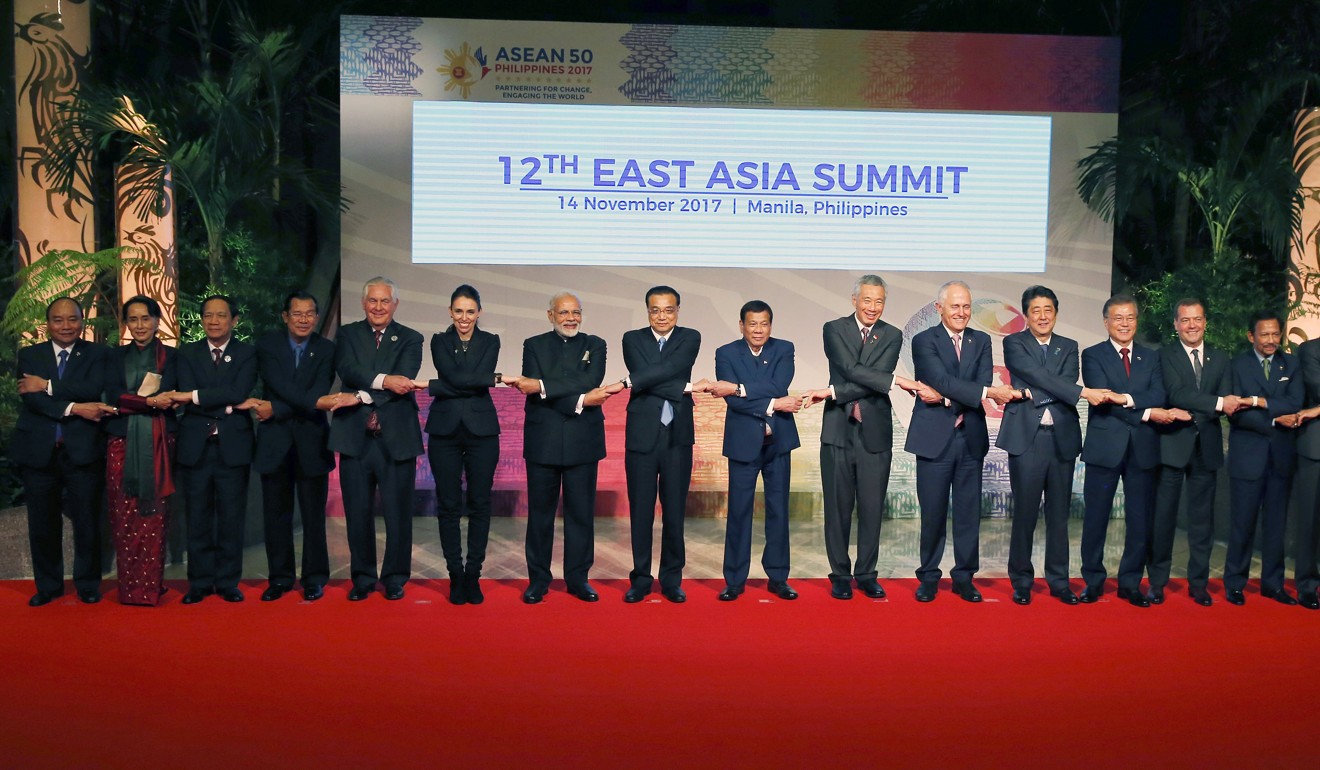
Donald Trump’s early East Asia Summit exit casts doubt over US ties to Asia
US president does a sudden about-turn and heads home, leaving question mark over his attendance at future regional meetings, analyst says

US President Donald Trump has again raised doubts about his country’s commitment to the region by opting abruptly to skip a full session of an Asian summit and head home.
Trump had been expected wrap up his marathon 12-day regional tour by attending the main session of the East Asia Summit in Manila on Tuesday, a gathering that was dominated by discussions on North Korea and trade.
But Trump left for home from the Philippines after a lunch with other state leaders because meetings were running about two hours late.
The US president said on Air Force One that he delivered his prepared remarks during the lunch instead of the summit meeting. US Secretary of State Rex Tillerson would attend the main session in his place, a senior White House official said.
Trump’s absence marked a stark contrast to the previous US administration of Barack Obama, which often reassured its allies of its commitment to the region.
Xu Liping, a Southeast Asia specialist at the Chinese Academy of Social Sciences, said Trump probably skipped the summit because he did not think the US could benefit from close ties with the Southeast Asian nations represented at the gathering. The East Asia Summit draws leaders from 18 countries – the 10 members of the Association of Southeast Asian Nations (Asean) and the dialogue partners of China, Japan, South Korea, India, Australia, New Zealand, the United States and Russia.
“It was a practical step for Trump,” Xu said. “Now there is a big question mark over his attendance at future meetings of Asean.”
Xu said Trump’s lack of interest in Southeast Asia would likely force Asean nations to look to other powers to contain China.
“The strategy of balancing China through the US is losing its effectiveness. Countries may strengthen their ties with India or Japan to make up for the US’ waning role,” he said.

Those most affected by the diminishing US presence would be states such as Singapore, Vietnam and Malaysia, which had relied heavily on the balance between China and the United States, Xu said.
Liu Weidong, a US affairs expert from the Chinese Academy of Social Sciences, said the last-minute cancellation, a rare call from a state leader, suggested Asian issues were low on Trump’s diplomatic agenda.
“Whatever the reason was, it showed Trump did not attach much importance to Asean,” Liu said. “But since Trump often acts surprisingly, people are more likely to forgive him.”
Despite Trump’s indifference, a strong Washington establishment would push for his administration to maintain the US’ presence in the region, Liu said.
“Trump only cares about short-term interests, but the establishment will not allow him to withdraw the US from Asia,” he said. “Even if the US decides to cut its involvement, China does not have enough influence to fill the gap. Asean countries are sceptical of China in terms of security.”
Despite the early exit, Trump described his tour as “fantastic”, saying he made “a lot of friends at the highest level” and the trip generated at least US$300 billion in deals for the US, mostly with China.
“We’ve explained that the United States is open for trade but we want reciprocal, we want fair trade for the United States,” he said.

Earlier in Vietnam, Trump said he would still stick to his “America first” approach, claiming other countries in the region had thrived at the expense of the US.
Those leaders who did attend the East Asia Summit focused on North Korea, the South China Sea and trade.
Chinese Premier Li Keqiang said on Monday that China agreed to start talks with Asean on the fine print of a code of conduct framework for the disputed waters, saying it would be a “stabiliser” for the region.
On Tuesday night, Philippine President Rodrigo Duterte described China as gracious in agreeing to start the negotiations. He said China had agreed that access to waterways and airspace in the South China Sea would be “unbridled” and “unfettered”.
Duterte also said North Korea’s missile tests were a concern for every leader at the summit. Pyongyang, he said, was “toying” with bombs.
Duterte said nobody could afford to go to war either in the South China Sea or over North Korea.
“We can’t fight or start a war, with the North Korea crisis looming ahead, there are dark clouds ... We’d better pray,” he said.
Also on Tuesday, heads of 16 countries involved in a regional trade deal known as the Regional Comprehensive Economic Partnership met for the first time to give momentum to the deal. But the agreement is still up in the air, with Japan managing to pull 11 member countries to sign the rival Trans-Pacific Partnership deal, which the US has withdrawn from.